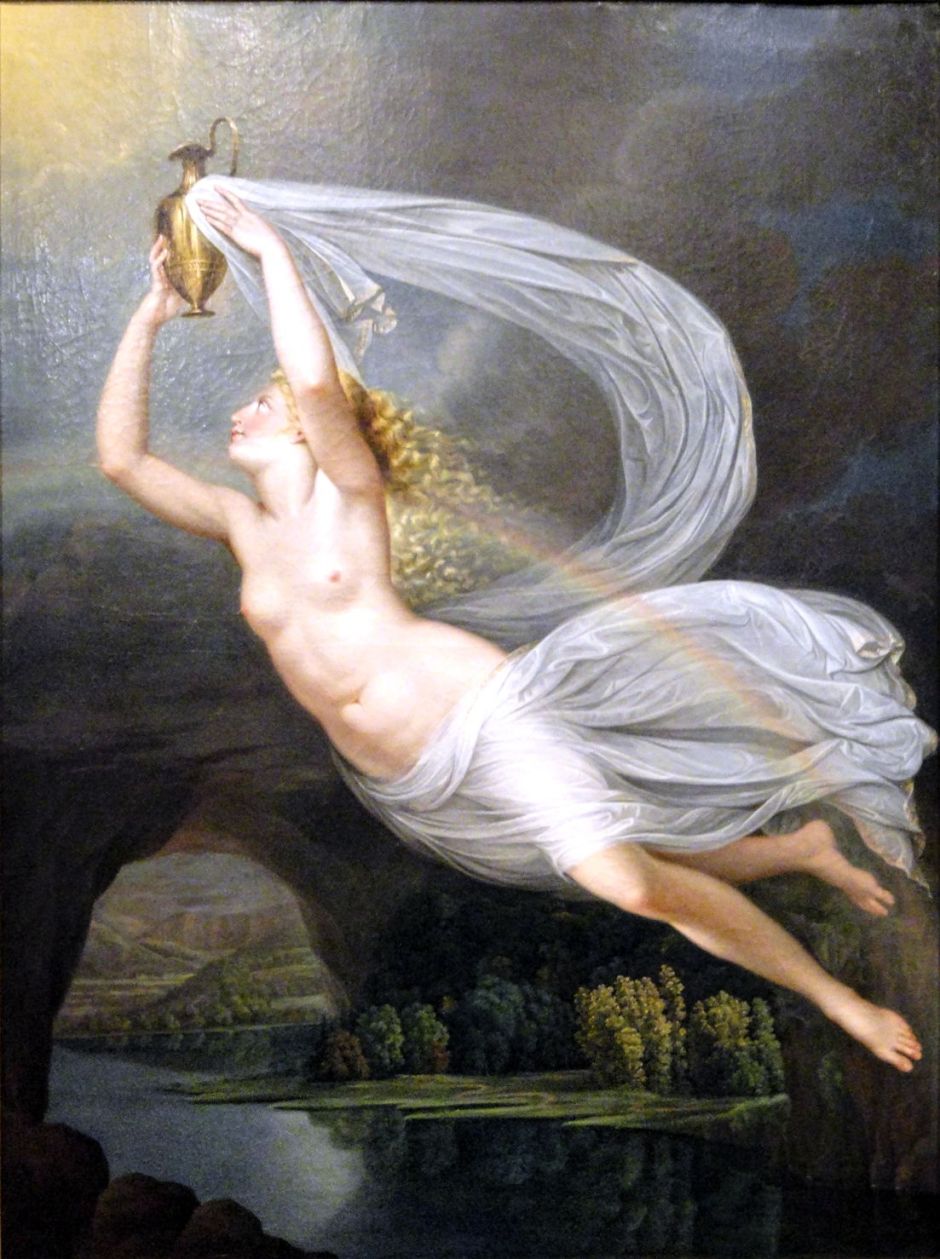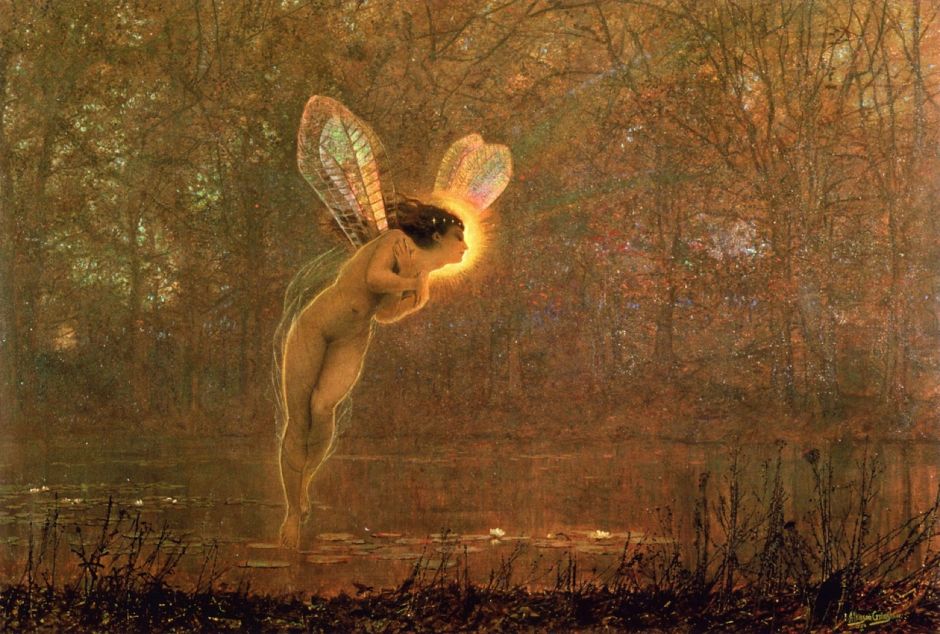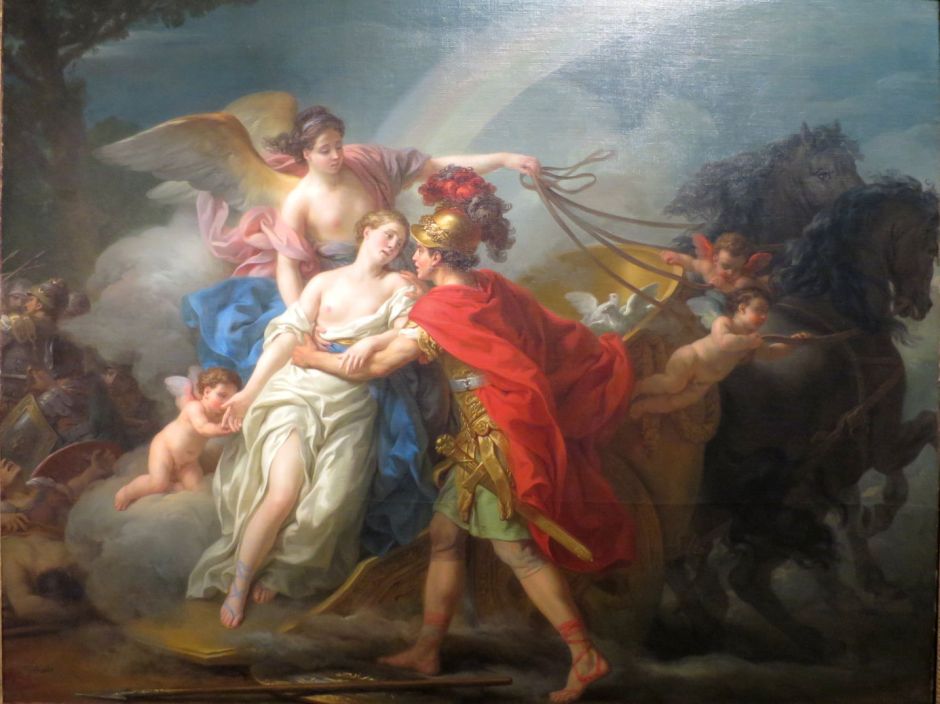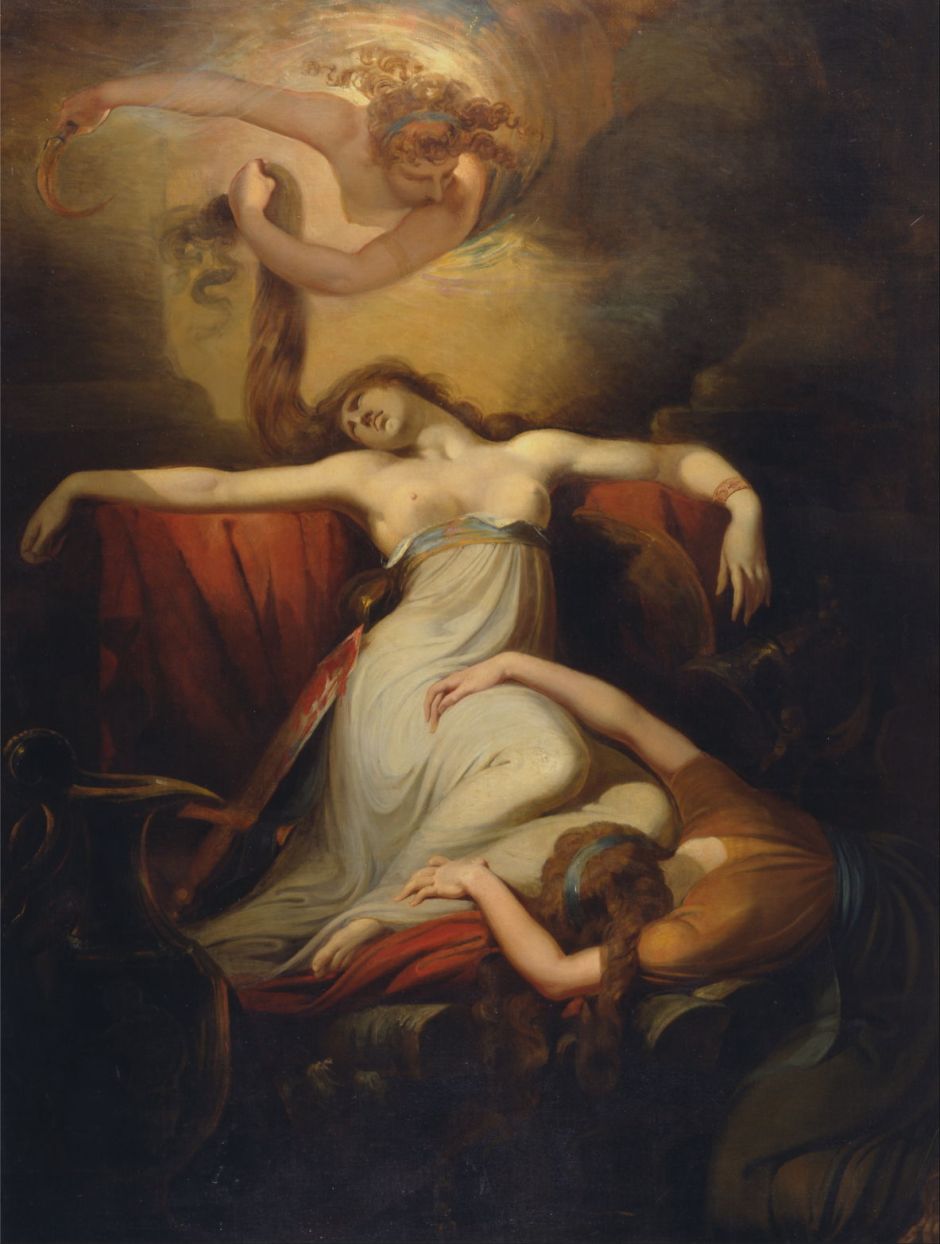Hermes (Mercury) wasn’t the only messenger of the gods. In that task he was aided by the personification of the rainbow, Iris (Greek Ἶρις), who was also known to the Romans under the same name. One of twins born to Thaumas and the Oceanid Electra, she remained loyal to the Olympian gods while her sister served the Titans. As a result, Iris was retained when Zeus and the Olympians triumphed over the Titans.
As a messenger, she’s also a cup-bearer, providing the Olympian deities with cups of nectar. She travels as fast as the wind, and is appropriately married to the god of the west wind, Zephyrus. Other myths report that Zephyrus raped Chloris, and married her as Floris, so perhaps Iris’s partner has some explaining to do.
As a divine messenger, she can be depicted carrying a similar caduceus to that of Hermes, although her most characteristic attributes are of course the rainbow, or in lieu of that, an arc formed from her billowing clothing. She is often shown with wings, which may be iridescent like those of some insects, rather than birdlike or feathered.

Antonio Palomino’s Allegory of Air from about 1700 shows Iris to the right, pointing to her rainbow, with Hera sat in her chariot which is drawn by a pair of peacocks. Both goddesses are making the sign of the bow using their garments, which contrast in their colours.

Guy Head’s Iris Carrying the Water of the River Styx to Olympus for the Gods to Swear By from about 1793 is a good example of the goddess in her role of cup-bearer to the Olympian deities. Iris was one of the few allowed to come and go not just to the River Styx to fetch its water, but to enter the Underworld when transferring dead heroes.

Like other young and attractive deities, at times it was fashionable for the elite to be painted as Iris. Élisabeth Louise Vigée Le Brun’s Portrait of Karoline von Manderscheid-Blankenheim, Princess of Liechtenstein (1768-1831), as Iris (1793) is one of the more convincing examples.

John Atkinson Grimshaw’s faerie portrait of Iris from 1886 is one of the latest paintings showing the goddess, with a magnificent set of iridescent wings. The word iridescent derives from her name.
Iris is also seen involved in several myths. Most popular has been one in which she is sent on a mission to wake Morpheus, the god of dreams, so that he can go on an errand for Hera.

René-Antoine Houasse’s Morpheus Awakening as Iris Draws Near, from 1688-89, is an early example of this story. Its most magnificent retelling was that painted by Pierre-Narcisse Guérin in 1811.

Guérin’s Narcissus, Morpheus and Iris shows her sitting at the upper right on a bench of clouds, her ethereal wrap forming her short wings. Morpheus is the smaller winged figure in the middle, looking up at Iris. Often omitted from the title of this painting, the sleeping male is Narcissus, whose beauty was so great that he fell in love with his own reflected image.
Iris also appears in several epics. In book five of Homer’s Iliad, she is involved in a story in which the unarmed Diomedes, one of the great Greek heroes, fights with Aphrodite’s son Aeneas. When Aeneas faints and has to be rescued by his mother before the Greek can kill him, Diomedes runs after the goddess and injures her arm. She then flees to Olympus, where she complains to Ares.

Joseph-Marie Vien shows Iris in command of the chariot in which Aphrodite is carried back to Olympus, in Venus, Wounded by Diomedes, is Saved by Iris from 1775.

George Hayter’s Venus, Supported by Iris, Complaining to Mars is a later account of this scene from the Iliad, which was exhibited to acclaim at the Royal Academy in 1820, and three years later won the Academy’s award for Painting of the Year. Iris is behind with her iridescent wings, helping Aphrodite towards a reclining Ares.
Iris also appears in her role as messenger in book nine of Virgil’s Aeneid, a story which has been painted by several artists.

Claudio Francesco Beaumont’s Iris Sent to Turnus by Juno from about 1738-40 is a sketch for one of the medallions in the vault of the Armeria Reale of Turin. It shows Iris sent to tell Turnus, the Rutulian warrior, that he must take advantage of the absence of Aeneas to attack the Trojans. This leads to the burning of their fleet, forcing Aeneas and his companions to settle in Italy.

One of Henry Fuseli’s few conventional history paintings shows Dido (1781), towards the end of book four of the Aeneid, as the founding queen of Carthage is in the throes of death after she had been abandoned by Aeneas. Fuseli adheres faithfully to Virgil’s account, around line 666: Dido has mounted her funeral pyre, and is on the couch on which she and Aeneas made love.
She then falls on a sword which Aeneas had given her, and that rests, covered with her blood, beside her, its tip pointing up towards her right breast. Her sister Anna rushes in to embrace her during her dying moments, and Zeus sends Iris (shown above, wielding a golden sickle to cut a lock of Dido’s hair) to release Dido’s spirit from her body. Already smoke seems to be rising up from the pyre, which will confirm to Aeneas that she has killed herself, as he sails away from Carthage. Iris is seen in a rainbow swirl, an interesting presentation which I am sure influenced the young William Blake.
For something so ethereal and fleeting, Iris had a great deal to do.

